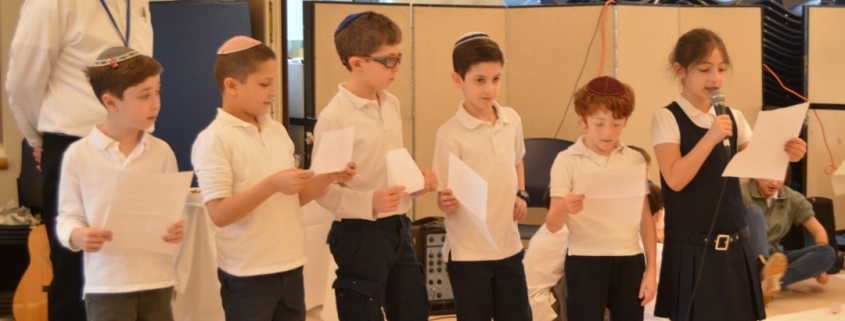15 Sep Schechter Manhattan Alumni Share Their Values in the Marketplace of Ideas
I am so proud of the graduates of Schechter Manhattan. I am impressed over and over by these accomplished, menschlich, strongly Jewishly identified young people. I was filled with pride again last month when in the course of two days I came across opinion pieces published by Schechter Manhattan graduates. Ariella Rosen, Class of 2014, and Noah Phillips, Class of 2016, both expressed important values that we hold dear at Schechter Manhattan that I continue to see playing out in our school each day.
Ariella’s piece in the New York Times about New York City Park Commissioner Charles Stover and the bench in Central Park in his memory highlights the importance of hearing others’ stories, the impact individuals can have on a community, and the power of softly spoken words. At Schechter Manhattan, we value getting to know people for who they are and opening space for everyone to share their voices in dialogue and contribute to our learning community. I saw this in action this week in the 2nd grade, where students were writing their ideas about how the classroom “peace corner” can help support their community goals. The second-grade peace corner is a spot where students can go for a quiet moment to gather themselves, or work out a potential conflict with a peer in quiet conversation. It reminds me a lot of Stover’s whisper bench in Central Park. With that in mind, I walked through other classrooms and noticed how in Schechter Manhattan classrooms there is frequently a buzz of conversation between students engaged in learning together. The partner, small group, and workshop learning structures so often employed at our school create learning environments where students can speak and listen, and one does not need to yell to be heard. Participating in this sort of dialogue prepares students to do what Ariella suggests is so important, to hear other people in this diverse world.
Noah wrote in the New York Jewish Week about the challenge and benefits of Jewish ritual practice for teenagers in the 21st century, and suggested that young Jews can balance Jewish ritual practices with secular pursuits, adjust rituals to match their values, and find inspiration within nurturing Jewish communities. At Schechter Manhattan, we believe it is worthwhile to seek relevance and meaning in Jewish practice and to think critically about one’s Jewish choices. I saw this in action this week in tfilah with the 6th grade, when the students each offered kavanot, something in the world or their lives they would focus on during the prayers. A number of students mentioned the hurricane in Florida, while others touched on things in their personal lives. This conversation extends what the elementary school students experience each time they open their handmade siddurim, and see the images and words that they drew and wrote on the pages, reminding them of their ideas and feelings about each tfilah. Asking students to connect personally to ritual practice and think deeply about what it means to them serves as practice for engaging just the sort of religious choices that Noah and his teenage peers face.
In addition to their beautiful articulation of these core values, Ariella and Noah displayed important skills in order to publish these pieces: strong writing, analytical and evaluative thinking, and the courage to raise their voices in the marketplace of ideas. I had the pleasure of helping them develop those skills when they were Schechter Manhattan students, and I am so gratified by their accomplishments. I feel privileged to be affording the current Schechter Manhattan students the same opportunities to build the skills and espouse the values that will serve them so well in their lives.
Shabbat Shalom
Benjamin Mann
Author’s Chair
Each week we will feature the written work of our students. We hope that you will stop back next week and see what they are writing and thinking about.
Gan
Gan wrote about their hopes and dreams for the new school year.
Click Here to see work by Julian, Amy, Hannah, Sarah, Tova, Amitai, Jonah, Keinan, Danielle & Landon
Kitah Bet
Kitah Bet has begun creating a community of readers. This past reading lesson, students were asked to share their reading memories. Each student recorded their reading memory and then explained why they chose that particular memory.
Click here to see work by Daniel S., Jonah S., Zeva K., Avner I., & Ethan B
Kitah Heh
In 5th Grade, we are strengthening our knowledge of the writing process through the creation of posters.
Click here to see work by, Simon, Annabelle, Nathaniel & Maya
Click here to see work by Samuel, Nina, Rafi & Hannah
Click here to see work by Ella C, Ben, Nadav & Dror
Click here to see work by Ella B, Shlomo, Ari & Talia
Click here to see work by Arielle, Avia, Sarah & Yhonatan
Kitah Zayin
In a five-minute writing exercise, seventh-grade students were asked to interpret the Midrash’s teaching that there are “seventy faces to the Torah.”
It could be the 70th anniversary [of Israel’s independence], or 70 souls or the many-faced creature in the Phantom Tollbooth who has a bunch of tales. 70 elders.
– Samuel
There are a lot of seventies in the torah. Maybe thats it. Maybe there were seventy elders and they gambled with a seventy-faced die. There are 5 books of the torah. 5×14=70!!!!!!!!!!!
– Caleb
Maybe it is talking about the 70 elders that advised Moses and saying that those elders represent all of the people in the Torah. 70 different groups of people with many people in each and together those make up Torah.



